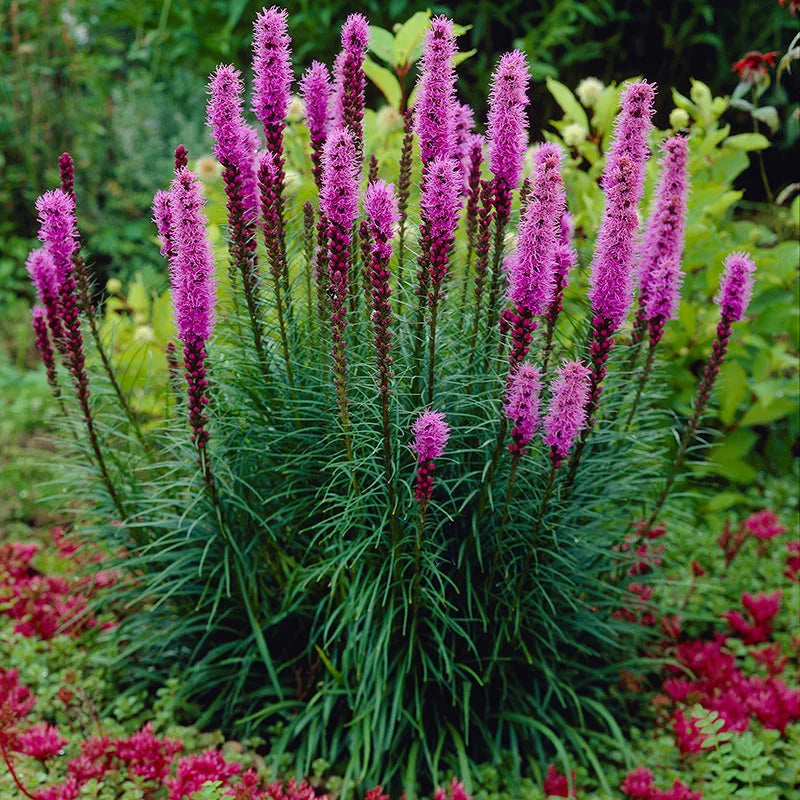Blazing Star Liatris Plants For Sale
liatris kobold, also called Blazing Star, is a prairie-grown native plant with purple flowers. It is ideal for full sun areas and makes a bold statement in your garden with its vertical appearance. It has long stalks and striking plumes of pink-purple blooms in Spring and Summer. It is a highly popular garden perennial, and at TN Nursery, we sell out of this plant quite often due to its striking appearance.
Landscape Uses and Maintenance
Blazing Star has upright, vivid purple blooms and long, thin, pointed leaves that will bring vertical structure and contrast to your garden. This native plant will become your late-season favorite with bold flowers that bloom from summer through early fall.
Plant in an area of your garden with full sun to encourage consistent flowering. Avoid planting in the shade: this will limit and can reduce flowering. Deadhead the spent flowers to encourage more new blooms throughout the growing season.
Liatris can be a great addition to the garden border, pond perimeter, pollinator or butterfly, or naturalistic style garden.
Give your new plants plenty of water when you first plant them to help establish a strong root system in their new home. Once established, this plant can tolerate drought and drier periods, but you can give it water weekly to help it thrive.
Cut back Blazing Star Liatris when the leaves begin to die off in the fall with your regular fall cleanup. Resist cutting back when the flowers begin to die to ensure the plant is getting optimal nutrients for the next season’s growth.
Noteworthy Characteristics of Liatris
Blazing Star attracts bees and many butterflies with its nectar-filled blooms, including Monarchs, Swallowtails, and Painted Ladies. Pair this vibrant perennial plant with other butterfly magnets, including Coneflower, Bee Balm, Asters, and Black Eyed Susan , for a great summer display that will last through the fall.
A great source of food for your local bird population! Birds will enjoy eating the seeds of this plant. Attract birds such as chickadees, sparrows, and goldfinches to your garden.
Blazing Star Plant Details
Family: Asteraceae
Light Requirement: Full Sun
Water Needs: Moderate
Height: 4 ft.
Spread: 1-2 ft.
Growth Rate: Moderate
Bloom Time: Summer
Flower Color: Purple
Wildlife Value: Attracts bees and butterflies.
Exposure
Blazing Star thrives in full sun and needs at least six hours of natural sunlight every day. While it can handle partial shade, optimal flowering and robust, upright growth are ensured in full sun. This plant is ideal for sunny gardens and open landscapes.
Height at Maturity
Over 12"
Usage
Pollinator Plant
Shipped As
Bare-root
Ships
USPS
Planting Zones
3-9





